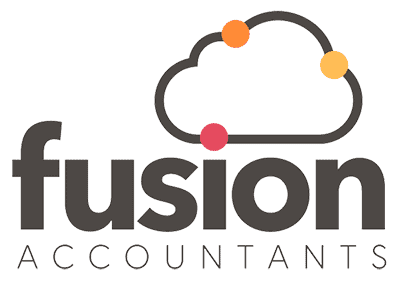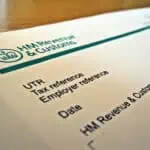Salary vs Dividends – which is best
Reading Time:
If you own a limited company, there are various tax-efficient ways to extract your profit depending on your different roles within the business. For example, if you run a company, you may pay yourself either in a salary or dividends. In this article, we will compare the tax advantages of both.
What is salary and how is it taxed?
Salary is the income you receive when you work for an employer or yourself via your own limited company via the Pay As You Earn system (PAYE). Alternatively, you can receive wages. The difference is that you receive a yearly salary split over 12 months, whereas wages get paid by the hour/day.
You don’t pay income tax on your earnings until you pass the personal allowance (currently £12,570 in the 2021/22 tax year). However, you will have to pay NICs if your income passes the NIC Primary Threshold (currently £9,568).
Note that to build up qualifying years for the state pension, your salary must be at or over the NIC Lower Earnings Limit (currently £6,240). Some directors, therefore, set their salaries between the Lower Earnings Limit and the Primary Threshold to keep their state pension but avoid paying NICs.
In the example below, let’s consider that you are on a gross salary/wage of £50,000 after expenses for the year:


PAYE Tax Bands 2021-22
| 21-22 | 22-23 | |||
|---|---|---|---|---|
| Tax | Tax | |||
| Band | Taxable Income | Rate | Taxable Income | |
| Personal | ||||
| Allowance | Up to £12,570 | 0% | Up to £12,570 | 0% |
| Basic rate | £12,571 to £50,270 | 20% | £12,571 to £50,270 | 20% |
| Higher rate | £50,271 to £150,000 | 40% | £50,271 to £150,000 | 40% |
| Additional Rate | Over £150,000 | 45% | 150,000 | 45% |
National Insurance Contribution Bands 2021-22 and 2022 -23
| Category letter | £120 to £184 (£520 to £797 a month) | £184 to £967 (£797.01 to £4,189 a month) | Over £967 a week (£4,189 a month) |
|---|---|---|---|
| A | O% | 12% | 2% |
| B | O% | 5.85% | 2% |
| C | N/A | N/A | N/A |
| H | O% | 12% | 2% |
| J | O% | 2% | 2% |
| M | O% | 12% | 2% |
| Z | O% | 2% | 2% |
| National Insurance category | Earnings at or above lower earnings limit up to and including the primary threshold | Earnings above the primary threshold up to and including upper earnings limit | Balance earnings above the upper earnings limit |
|---|---|---|---|
| A | O% | 13.25% | 3.25% |
| B | O% | 7.1% | 3.25% |
| C | nill | nill | nill |
| F (Freeport) | O% | 13.25% | 3.25% |
| H (apprentice under 25) | O% | 13.25% | 3.25% |
| I (Freeport-married women and widows reduced rate) | O% | 7.1% | 3.25% |
| J | O% | 3.25% | 3.25% |
| L (Freeport-deferment) | O% | 3.25% | 3.25% |
| M (under 21) | O% | 13.25% | 3.25% |
| S (Freeport-state pensioner) | nill | nill | nill |
| V (veteran) | O% | 13.25% | 3.25% |
| Z (under 21- deferment) | O% | 3.25% | 3.25% |
For the sake of PAYE tax, the first thing we need to do is work out your taxable pay so we will take your £50,270 and we will deduct your tax allowance of £12,570 (standard allowance for this year, HMRC will send you a letter if yours is different). This leaves you with £37,700 of taxable pay and is charged at the lower tax rate of 20%, meaning the tax you pay on the £50,270 is £7540.
You have next got to work out the National Insurance, specifically Class 1 contributions, also known as employee contributions. So, take your gross amount of £50,270 again, and we will deduct the threshold before you start incurring national insurance contributions of £9880, which means that we have £40,390 of income to work out NICs on at 13.25% The amount you need to pay for NICs will therefore be £5,351.67
Out of the original £50,270, you’ve only received £37378.33 (£50,270-£7,540-£5351.67).
From 6th July 2022 to 5th April 2023 the National Insurance threshold will go up to £12,570 from £9,880.

As you can see, the dividend tax remains lower than the PAYE tax. Throw in the Employee NIC, and it increases the difference even further.
What are dividends and how are they taxed?
You may get a dividend payment if you own shares in a company. You can earn some dividend income each year without paying tax. You do not pay tax on any dividend income that falls within your Allowance (the amount of income you can earn each year without paying tax). You also get a dividend allowance each year. You only pay tax on any dividend income above the dividend allowance.
Dividend allowance
| Tax year | Dividend allowance |
|---|---|
| 6 April 2021 to 5 April 2022 | £2,000 |
| 6 April 2020 to 5 April 2021 | £2,000 |
PAYE Tax Bands vs Dividends Tax Bands
| Taxable income (England, Wales & Northern Ireland) | Rate of tax |
|---|---|
| £0 – £12,500 | 0% |
| £12,500 to £50,000 | 20% (basic rate) |
| £50,001 to £150,000 | 40% (higher rate) |
| Over £150,000 | 45% (additional rate) |
| Income tax band | Dividend tax rate 2021/22 | Dividend tax rate 2022/23 |
|---|---|---|
| Basic rate (income of £12,570-£50,270) | 7.5% | 8.75% |
| Higher rate (£50,271 – £150,000) | 32.5% | 33.75% |
| Additional rate (>£150,000) | 38.1% | 39.35% |
Paying yourself in dividends
Dividends are a share of the profits which are paid to business shareholders as a return on their investment. Unlike paying salaries the business must be making a profit (after tax) in order to pay dividends. Because there is no national insurance on investment income it’s usually a more tax-efficient way to extract money from your business, rather than taking a salary.
There’s a tax-free dividend allowance for the first £2,000 pa, after which the tax rate on company dividends (2020/21) is 7.5% (basic), 32.5% (higher) and 38.1% (additional) depending on your other income. Only shareholders can receive dividends as a reward for their investment risk. Directors who are not shareholders cannot receive dividends. From 2022/23, the tax-free dividend allowance remains the same at £2,000 pa, after which the tax rate on company dividends is 8.75% (basic), 33.75% (higher) and 39.35% (additional) depending on your other income. Therefore, the income tax payable on dividends withdrawn of £50,270 will be £4,223.63
Drawbacks of taking dividends
Although receiving most of your income in the form of dividends may appear to be a win-win situation, there are several limitations and risks to be aware of:
- You can only receive dividends out of profits
- After corporation tax has been deducted, dividends are paid out (unlike a salary, which is a tax-deductible expense)
- If you rely too heavily on dividends, your income may become unstable.
- If you unintentionally collect a dividend not covered by profits, this is classified as a director’s loan, and you must repay it.
Paying yourself a salary
You don’t have to pay income tax until you reach the personal allowance (currently £12,750 in the 2021/22 tax year). After that, if your income exceeds the NIC Primary Threshold (currently £8,632), you must pay NICs.
For 2022/23 you won’t have to pay income tax until you reach the personal allowance (£12,750). After that, if your income exceeds the NIC Primary Threshold (currently £9,880), you must pay NICs.
Keep in mind that to accumulate qualifying years for the state pension, your salary must be equal to or greater than the NIC Lower Earnings Limit (currently £6,136). As a result, some directors fix their salaries between the Lower Earnings Limit and the Primary Threshold to retain their state pension but avoid paying National Insurance contributions.
The drawbacks of taking a salary
- You and your employer both have to pay National Insurance contributions if you work for a small business that pays wages (NICs)
- In addition, the income tax burden on a salary is more significant than that of a dividend.
Other things to consider
The first is that the only limit on salary from a third party is how much you can get them to pay you. On the other hand, dividends are limited to the amount of retained earnings that you have in the company, so no profits after corporation tax mean no dividends for you to take. Taking more dividends out of a company than there are retained earnings is an illegal practice so keep this in mind before you go emptying the bank.
IR35.
IR35 means that if you look like an employee of your client, you will be taxed likewise. This negates any benefit you receive by working through a limited company. You pay extra tax as an employee would while also incurring the costs of running a limited company. As a result, you end up worse off than if you just worked for your client as an actual employee in the first place.
Your tax bracket
In the example above, we discussed income up to £50,270 if you go above this amount. After that, however, the tax rates increase. This goes from 20% to 40% for salaries, and for dividends, this goes from 8.5% to 33.75%. The increase is more considerable for dividends, but you are still better off. Of course, this is only concerning the income over the £50,270 threshold; everything below is still calculated the same.
As mentioned previously, dividends are based on the shares you have in the company, and the types of shares can vary. These can vary from ordinary shares to special rights shares and even ABC shares.
Business Asset Disposal relief (formerly Entrepreneurs’ relief).
If you have a lot of profits in your company that you wish to take out and no longer want to run your company. We can help you take advantage of Business Asset Disposal Relief. This will allow you to take money out of your business at a tax rate even lower than you would have received via dividends tax.
Are you planning to set up a limited company?
Having read the article, you may have decided that dividends are the better option. The reason for this may be because of the tax rates that apply to the two types of income and that you also have national insurance contributions to pay on a salary (which can either be class 1 contributions on an employer’s payroll or class 2 and 4 contributions via a self-assessment tax return).
The first step is to ensure that you are working through a limited company. If you are not sure of this or wish to set one up, please speak to one of our Accountants in London or call us 0208 577 0200, and we will answer any tax questions you may have, and we get you up and running in no time.
Once you are up and running for a month, we can work with you to get all of your figures in order and work out the most tax-efficient way of taking dividends out of the company.
One final thing to consider: If you have a fair number of shareholders and directors, you should write down the rules for how you take money out of the company in a shareholder’s agreement and a director’s service contract so that everyone can understand.






